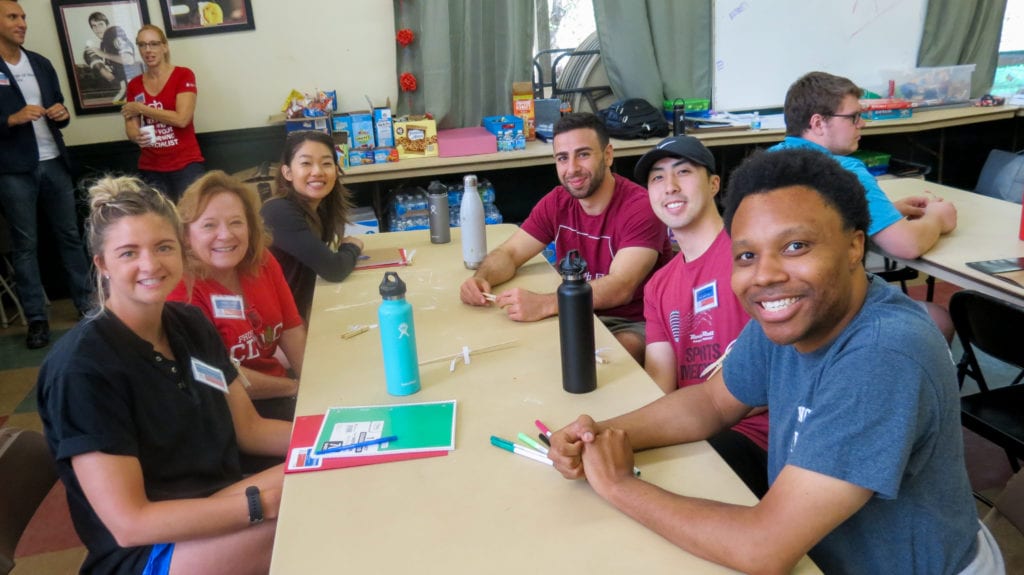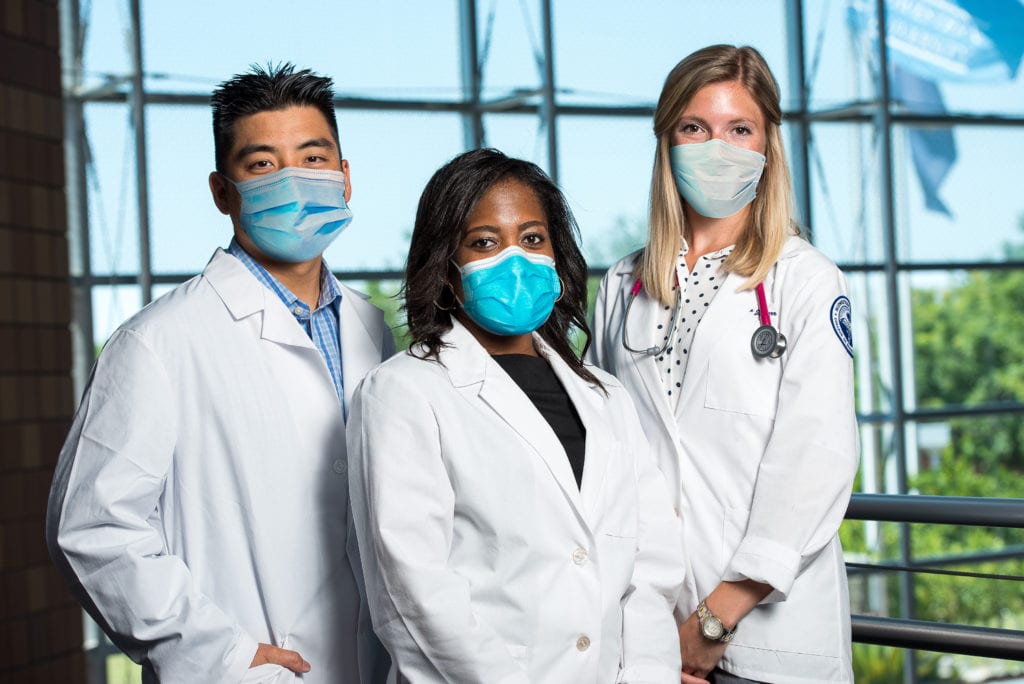
*This article first appeared in the Spring 2021 issue of Arizona Physician magazine, a publication of the Maricopa County Medical Society.
By Brian Powell
Flinn Foundation
Dr. Kenneth Poole of Mayo Clinic Arizona says ideally, the race or ethnicity of a physician should not impact patient care.
But Poole, an internal-medicine physician who oversees patient experience at Mayo Clinic Arizona and serves on the admissions committee for Mayo Clinic Alix School of Medicine, says that available data shows people tend to prefer racially and culturally congruent care—and that such care can impact outcomes.
For instance, Black men have poor health outcomes compared to white men and a lower life expectancy. Poole points to data showing that the only proven way to date to narrow that health gap is for Black male patients to see Black male physicians, as Black men are more likely to engage in preventative services recommended by Black physicians.
“What if for certain groups there is a better outcome if they do have their physician-request granted. If, knowing that, you deny that request, is that morally wrong?” Poole said.
This is just one example of how the racial and ethnic makeup of the physician workforce, starting with who is accepted into medical school, can impact health outcomes in the community.
But today, Black males are the most underrepresented group in medical school, with only 5% of practicing physicians nationally identifying as Black.
“When you have similarities between patient and physician, you get better compliance, probably because there is more trust there,” said Francisco Lucio, associate dean of equity, diversity, and inclusion at University of Arizona College of Medicine-Phoenix. “People are more likely to take their medications and come back to their next appointment, which is important to health outcomes.”
The medical school commitment to diversity
The four medical schools in Maricopa County have all made efforts to incorporate diversity and cultural teachings into their admissions process and curriculum as they seek to improve patient care by all physicians for all people.
University of Arizona College of Medicine-Phoenix, Mayo Clinic Alix School of Medicine in Scottsdale, A.T. Still University School of Osteopathic Medicine in Arizona, Arizona College of Osteopathic Medicine at Midwestern University in Glendale, and the Creighton University School of Medicine Phoenix campus—which will be the county’s fifth medical school when it opens in midtown Phoenix in fall 2021—have all stated their commitment to diversity.
School representatives shared examples of the work being done to lead to a more diverse student body and ultimately workforce.
For instance, admissions offices are taking a more holistic look at applications. Admissions committees have representation from underserved communities. New programs have been established to create paths into medical school for students who would not qualify with their undergraduate grade point average and MCAT scores. Attention is being placed on diversifying the faculty at medical schools, including seeking a higher percentage of women. And marketing and recruitment efforts are targeting the LGBT community and establishing relationships with historically Black colleges and universities.
“We start with a goal of trying to reflect the community we are serving in Arizona,” Lucio said. “We let folks know that we are here and a place that wants students from groups that are historically underrepresented.”
The medical schools offer their own scholarships and pipeline programs, such as the Pathway Scholars Program at University of Arizona for individuals who are socioeconomically disadvantaged, first-generation college students, from rural Arizona, or members of federally recognized American Indian tribes.
Clinton Normore, vice president for diversity and inclusion at ATSU, says his medical school seeks students from rural or underserved urban neighborhoods, for instance, with a desire to return to those settings to make a difference.
“Having practitioners that look like the population matters,” Normore said.
In parallel to medical schools’ internal efforts are programs by nonprofit groups such as Scottsdale-based ElevateMeD, which assists students from racial and ethnic backgrounds traditionally underrepresented in medicine.
ElevateMeD is led by Dr. Alyx Porter, a Mayo Clinic neuro-oncologist in Scottsdale. The organization she founded in 2019 provides financial scholarships as well as mentorship and leadership training to African American, Hispanic, and Native American medical students. In its inaugural year, $100,000 in scholarships were distributed to 10 students across the nation, including one attending the Mayo Clinic Alix School of Medicine in Scottsdale and another the University of Arizona in Tucson.
The vision of the schools and supporting organizations is a more diverse physician workforce taught by a more diverse faculty will be better trained and prepared to serve an increasingly diverse and growing population, leading to improved care and health for the roughly 4.5 million Maricopa County residents and beyond.

The Midwestern Bridges Program
The Midwestern University campus in Glendale, or AZCOM, receives about 5,400 applicants a year for 250 slots, with undergraduate academic performance and MCAT scores playing a large role in the admissions process.
The new Bridges Program is committed to recruiting students from underrepresented and disadvantaged backgrounds who otherwise would not be accepted into the medical school. Up to 25 students per year, or 10% of the AZCOM class, will be accepted into the program which begins with a one-year biomedical sciences master’s degree program at Midwestern.
The 25 students, who are required to meet a minimum GPA and MCAT score for acceptance into the Bridges Program, will automatically have a spot reserved for them in the medical school and will not be required to retake the MCAT or reapply, but they must prove to be a high-performing student and maintain a 3.2 GPA, AZCOM Dean Dr. Lori Kemper said.
“We feel this is going to increase our diversity and give people a foot in the door who wouldn’t have had one because their numbers were too low to be considered,” Kemper said. “But we want to know you are going to be successful and we are going to give you the tools to be successful.”
Diversity beyond race
Normore said ATSU’s “Diversity Means More than Hue” marker reflects the fact that only thinking about people of color overlooks many other underrepresented populations—the LGBT population, disabled population, people in the military, the poor—who need be included in the process and are important to the idea of diversity.
In Maricopa County, according to July 2019 estimates, 7.5% of the population under 65 lives with a disability and 12% live in poverty—factors that could impact a commitment to preventive medicine if there is trouble relating to a physician.
The LGBT community can face barriers to care or encounter challenges as patients of primary-care physicians without a lot of experience working with the population, Lucio said.
“We want to make the school welcoming for LGBT, and one of the first things we have done is revise our mission statement to include folks from different sexual orientations,” Lucio said.
AZCOM has established a required course for students to learn about health disparities and how they may impact people’s ability to get needed medical care, said Kemper, helping students have the ability to meet patients where they are.

The future workforce
The most recent Association of American Medical Colleges data reveals a physician workforce already changing, even before the past year brought greater attention to diversity and inclusion issues.
As of 2019, the AAMC reports 64% of active physicians are male and 56% are white. The percentage of Asian physicians, at 17%, is greater than the combined number of identified Hispanic, African American, and Native American physicians with the race unknown for 14% of physicians.
However, about 45% of U.S. physicians are age 55 or older, and this cohort has a greater percentage of white and male physicians than in younger groups. Women outnumber men, in fact, among physicians 34 years of age and younger.
In 2019, 51 percent of all medical-school acceptances were female and 50 percent where white, the latter a significantly lower percentage than among all practicing physicians.
If these trends continue, non-white patients will be more likely to see a physician who is the same race or speaks the same language, while female patients will be more likely to see female doctors.
And the hope is the changing medical school—and future workforce—will translate into improved care for all patients.
Read more:
TGen’s online MindCrowd research project aims to provide a personalized guide for successful brain aging (Arizona Physician Spring 2020)
Preparing for COVID-19 during flu season (Arizona Physician Summer 2020)